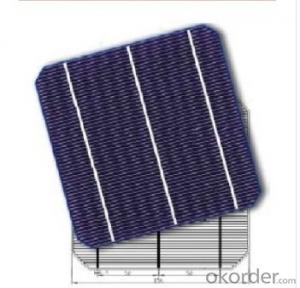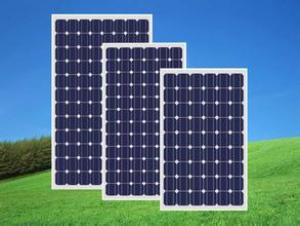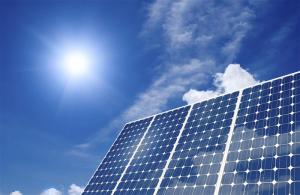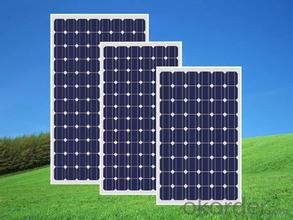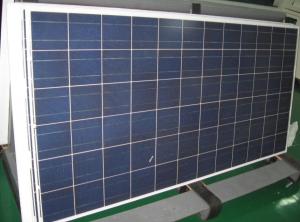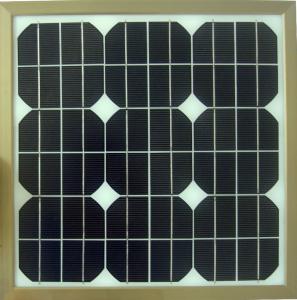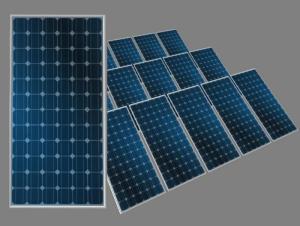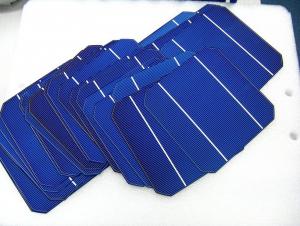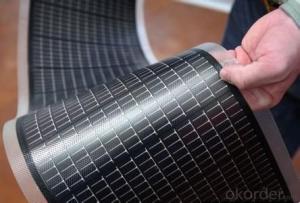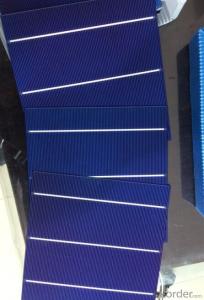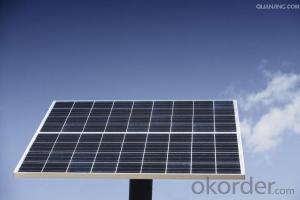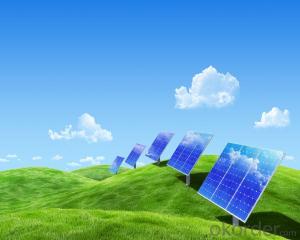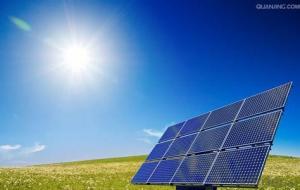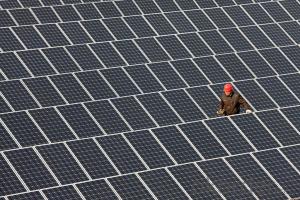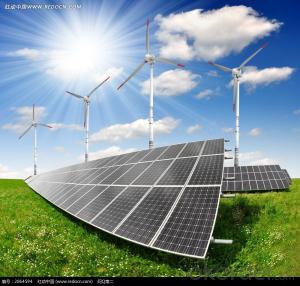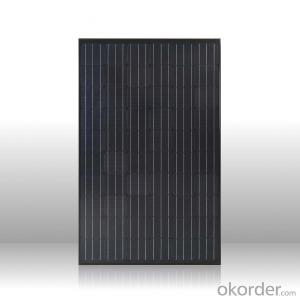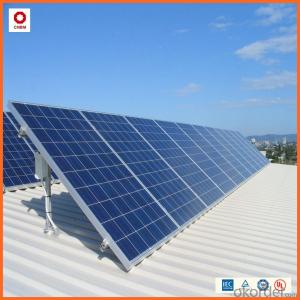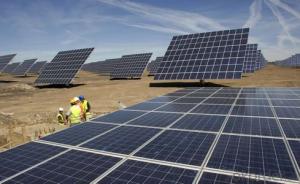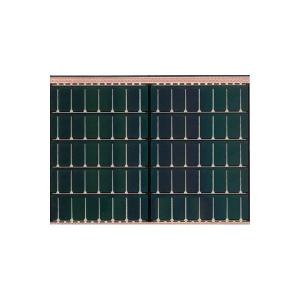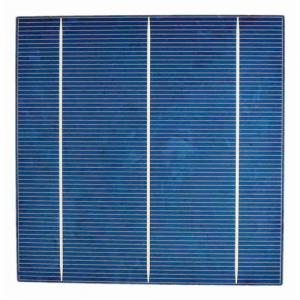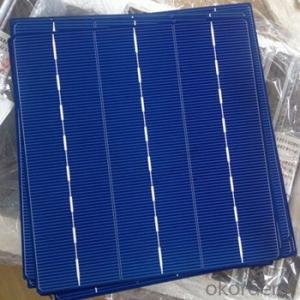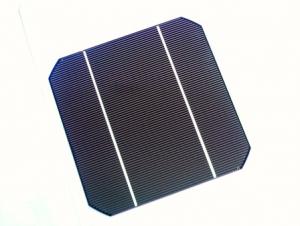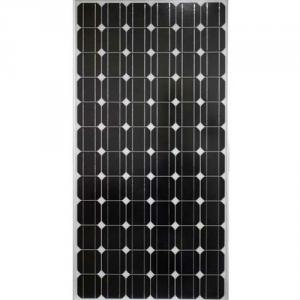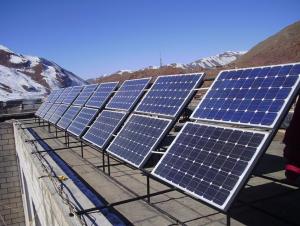250W High Temperature Solar Cells Mono Solar Panel with High Efficient Output and 25 Years Quality Assurance
- Loading Port:
- Shanghai
- Payment Terms:
- TT or LC
- Min Order Qty:
- 1 PCS
- Supply Capability:
- 100000 PCS/month
OKorder Service Pledge
OKorder Financial Service
You Might Also Like
Mono Solar Cell 156mm
Product Description
Most solar modules are currently produced from crystalline silicon (c-Si) solar cells made of multicrystalline andmonocrystalline silicon. In 2013, crystalline silicon accounted for more than 90 percent of worldwide PV production, while the rest of the overall market is made up as they offer the highest ratio of generated power per kilogram lifted into space. MJ-cells are compound semiconductors and made of gallium arsenide (GaAs) and other semiconductor materials. Another emerging PV technology using MJ-cells is concentrator photovoltaics (CPV).
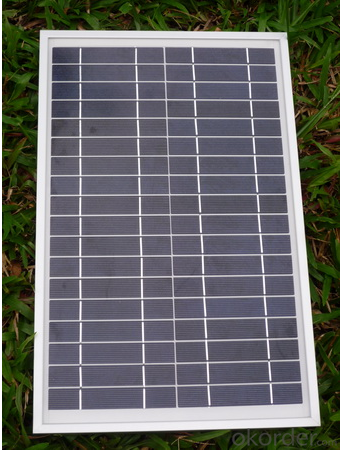
Feature
High quality cell
Level A cell
Dimensione:125*125mm Diagonal:150mm / 165mm
Qualified certification: TUV,CE certification.Warranty: five years for whole unit
Application Of Mono Solar Cell 156mm
Monocrystalline solar cells are currently the fastest developing a solar cell, its structure and production process has been finalized, the products have been widely used for space and ground. Such solar cells with high purity silicon rods as raw materials. Silicon rods, material performance indicators in order to reduce production costs, and now solar terrestrial applications such as the use of solar grade somewhat relaxed. Some semiconductor devices can also be used for processing materials and discard the head and tail of silicon materials, solar cells after re-drawn into a dedicated silicon rods.
Physical characteristic
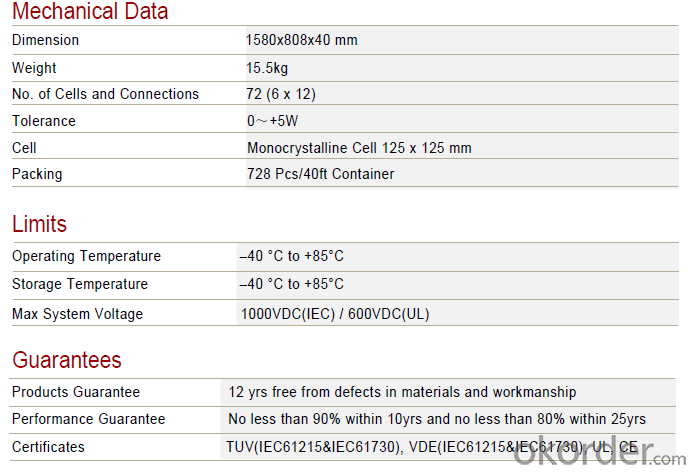
- Q: Can solar cells be used in developing countries?
- Yes, solar cells can be used in developing countries. In fact, they are increasingly being used as a cost-effective and sustainable solution to address the energy needs of these countries. Solar cells provide access to electricity in remote areas where traditional grid infrastructure is unavailable or unreliable. They can power homes, schools, healthcare centers, and other essential services, improving living conditions and fostering economic development. Additionally, solar energy is abundant and renewable, reducing dependence on fossil fuels and mitigating climate change impacts.
- Q: What is the role of solar cells in powering remote monitoring systems?
- Solar cells play a crucial role in powering remote monitoring systems by converting sunlight into electricity. These systems are often installed in remote locations where access to traditional power sources is limited or non-existent. Solar cells provide a sustainable and reliable source of energy to continuously power these systems, allowing for continuous monitoring and data collection even in remote areas.
- Q: What do the solar cell suppliers provide once we purchase the order from the solar cells from them.
- The solar cells suppliers might also help you to finish you solar cells installation process, which is considered to be a necessary but valuable service they can provide to the clients.
- Q: How do solar cells impact the local economy?
- Solar cells can have a positive impact on the local economy in several ways. Firstly, the installation and maintenance of solar panels create job opportunities, stimulating employment and income growth within the community. Additionally, solar energy reduces the reliance on imported fossil fuels, leading to reduced energy costs for local businesses and residents. This, in turn, frees up funds that can be reinvested in the local economy, fostering economic development. Moreover, solar power can also generate revenue for local governments through tax incentives and property value increases. Overall, solar cells contribute to a more sustainable and prosperous local economy.
- Q: How long does it take to make a solar cell?
- 1-2 days.
- Q: What is the role of bypass diodes in solar cell systems?
- The role of bypass diodes in solar cell systems is to minimize the impact of shading or partial module failure. They allow current to bypass the shaded or malfunctioning cells, preventing them from reducing the overall performance of the system.
- Q: How do solar cells perform in high-altitude locations?
- Solar cells perform well in high-altitude locations due to several factors. Firstly, at higher altitudes, there is less atmospheric pollution and dust, resulting in cleaner and clearer sunlight, which enhances the performance of solar cells. Additionally, the thinner atmosphere at high altitudes allows for less scattering and absorption of sunlight, enabling solar cells to receive a higher intensity of solar radiation. This combination of cleaner and more intense sunlight makes solar cells more efficient and productive in high-altitude locations.
- Q: What is the efficiency of a solar cell?
- The efficiency of a solar cell refers to the percentage of sunlight it can convert into usable electrical energy.
- Q: Can solar cells generate enough electricity to power an entire house?
- Yes, solar cells can generate enough electricity to power an entire house. The energy output of solar cells depends on various factors such as the size of the system, location, and the amount of sunlight received. With a properly designed and adequately sized solar system, it is possible to generate enough electricity to meet the energy needs of a typical house, and even potentially produce surplus energy that can be fed back into the grid.
- Q: Can solar cells be used for powering satellites?
- Yes, solar cells can be used for powering satellites. In fact, they are the primary source of power for most satellites in space. Solar cells convert sunlight into electricity, which is stored in batteries for use during periods of darkness or when the satellite is in Earth's shadow.
Send your message to us
250W High Temperature Solar Cells Mono Solar Panel with High Efficient Output and 25 Years Quality Assurance
- Loading Port:
- Shanghai
- Payment Terms:
- TT or LC
- Min Order Qty:
- 1 PCS
- Supply Capability:
- 100000 PCS/month
OKorder Service Pledge
OKorder Financial Service
Similar products
Hot products
Hot Searches
Related keywords
